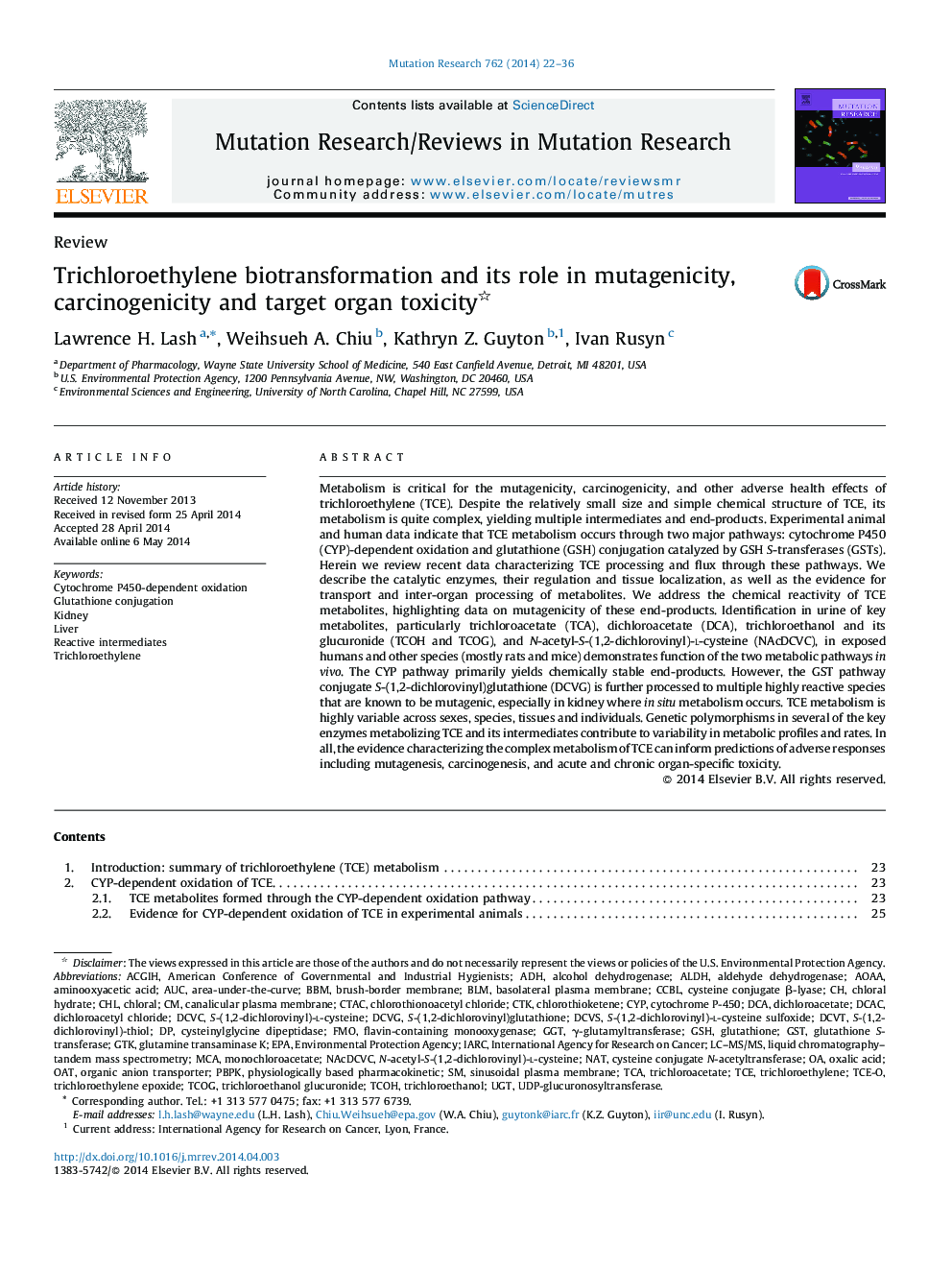| کد مقاله | کد نشریه | سال انتشار | مقاله انگلیسی | نسخه تمام متن |
|---|---|---|---|---|
| 2149533 | 1548752 | 2014 | 15 صفحه PDF | دانلود رایگان |

• Trichloroethylene is mutagenic and carcinogenic in humans and animals.
• Trichloroethylene undergoes both cytochrome P450- and glutathione-dependent metabolism.
• Glutathione-derived metabolites of trichloroethylene are mutagenic.
• Species-, sex-, and tissue-dependent differences exist in trichloroethylene metabolism.
Metabolism is critical for the mutagenicity, carcinogenicity, and other adverse health effects of trichloroethylene (TCE). Despite the relatively small size and simple chemical structure of TCE, its metabolism is quite complex, yielding multiple intermediates and end-products. Experimental animal and human data indicate that TCE metabolism occurs through two major pathways: cytochrome P450 (CYP)-dependent oxidation and glutathione (GSH) conjugation catalyzed by GSH S-transferases (GSTs). Herein we review recent data characterizing TCE processing and flux through these pathways. We describe the catalytic enzymes, their regulation and tissue localization, as well as the evidence for transport and inter-organ processing of metabolites. We address the chemical reactivity of TCE metabolites, highlighting data on mutagenicity of these end-products. Identification in urine of key metabolites, particularly trichloroacetate (TCA), dichloroacetate (DCA), trichloroethanol and its glucuronide (TCOH and TCOG), and N-acetyl-S-(1,2-dichlorovinyl)-l-cysteine (NAcDCVC), in exposed humans and other species (mostly rats and mice) demonstrates function of the two metabolic pathways in vivo. The CYP pathway primarily yields chemically stable end-products. However, the GST pathway conjugate S-(1,2-dichlorovinyl)glutathione (DCVG) is further processed to multiple highly reactive species that are known to be mutagenic, especially in kidney where in situ metabolism occurs. TCE metabolism is highly variable across sexes, species, tissues and individuals. Genetic polymorphisms in several of the key enzymes metabolizing TCE and its intermediates contribute to variability in metabolic profiles and rates. In all, the evidence characterizing the complex metabolism of TCE can inform predictions of adverse responses including mutagenesis, carcinogenesis, and acute and chronic organ-specific toxicity.
Figure optionsDownload as PowerPoint slide
Journal: Mutation Research/Reviews in Mutation Research - Volume 762, October–December 2014, Pages 22–36